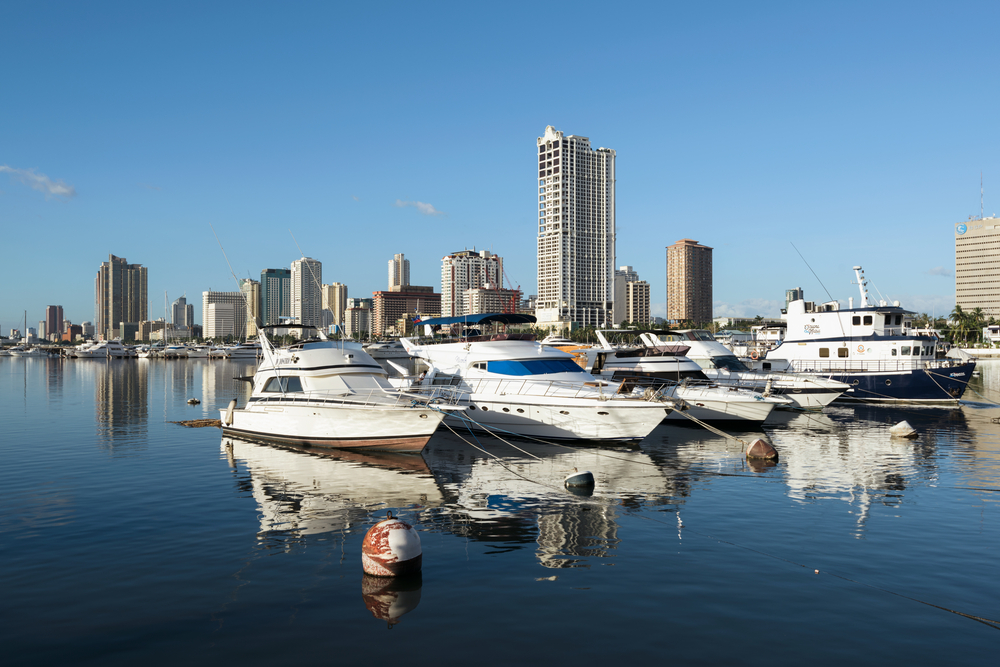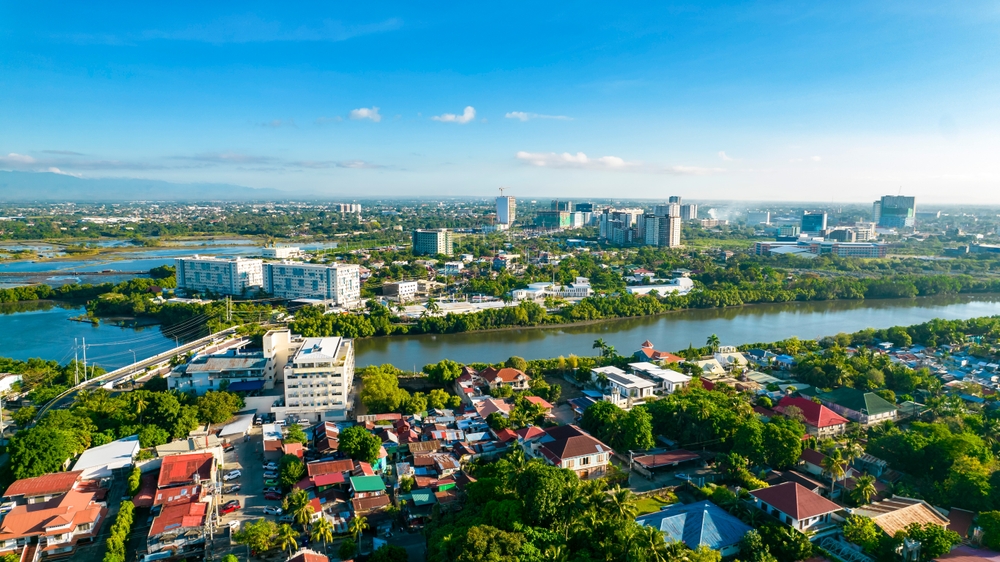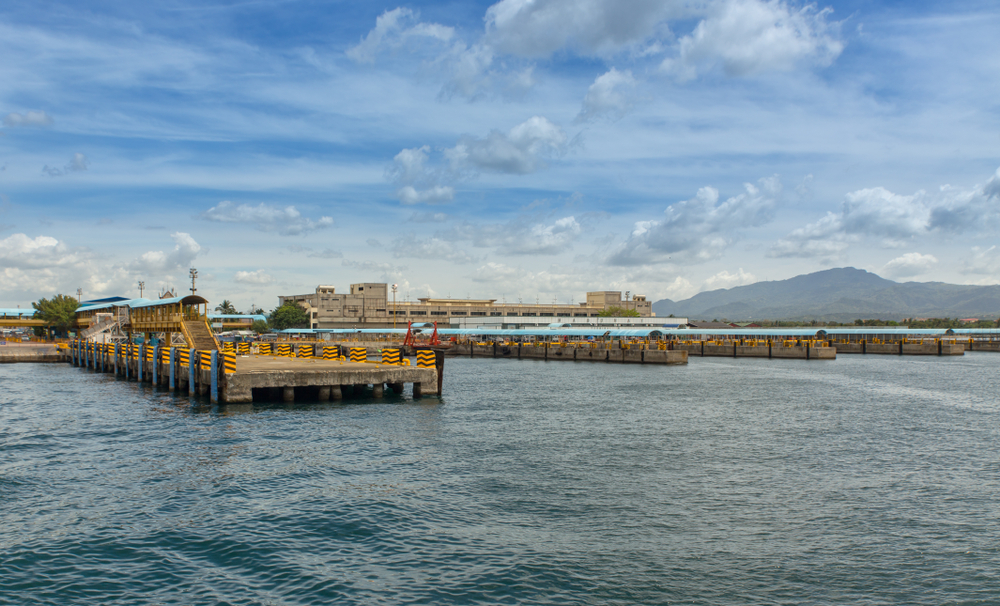Philippine real estate set for takeoff as economy accelerates

Philippine real estate set for takeoff as economy accelerates
The Philippines is reasserting its position on the global stage as one of the world’s hottest markets for luxury homes thanks to its increasingly liberalised economy

Filipinos are in the mood for spending once more, be it on residential real estate or purchases at the shopping mall.
This resurgence comes as the Philippine government opens the economy to more foreign investment, supercharging its retail and industrial segments.
Propped up by a sanguine job market and record remittances from the 12-million-strong Filipinos overseas, locals are simply “going out more and have more money to enjoy non-essential activities,” claims the country’s finance department.
Residential real estate prices nationwide rose 12.9 percent year-on-year in the third quarter of 2023, central bank figures show. At the same time, luxury home prices in Manila saw the highest growth of any city in the world.
“We expect the momentum seen in 2023 to continue this 2024,” says Lovelle Taleon, director of consultancy at real estate agency Santos Knight Frank. “It is undoubtedly going to be a transformative year for Philippine real estate.”
The Philippines’ GDP grew 5.6 percent in 2023, missing government targets but still expanding faster than that of China, Vietnam, and Malaysia. Higher household consumption and investments in public infrastructure funnelled an uplift to the lower middle-income economy.
International tourist arrivals topped 5.45 million last year while expatriates returned to the leasing market, pushing up rents by 3.5 percent in sought-after areas like Makati, Fort Bonifacio, and Rockwell, according to research from real estate firm Colliers.
Endowed with everything from marquee branding to backup power and roomy cuts, prime homes across Metro Manila surged in price by 21.2 percent in Q3 2023, faster than Dubai, reports Santos Knight Frank. “This price escalation was and still is a direct result of the restricted supply of high-end residential developments available in the market,” says Taleon.

Condominium units in sought-after areas of Metro Manila are witnessing a spike in rents. JonBilous/Shutterstock
In an environment of flattish yields, properties priced from PHP20 million (USD357,000) could serve as viable hedges against inflation, according to Joey Bondoc, associate director for research at Colliers Philippines.
“The market is relatively small, especially if you focus on demand in Metro Manila and Cebu, but this luxury market is awash with cash and remains a steady source of demand both for end use and investment purposes,” he says.
Greater private consumption also spurs retail development. Around 385,900 square metres of new retail space will be delivered in 2024, an all-time high, with F&B dominating take-up, according to Colliers.
“During the pandemic, when retail went down, office had that steady cash flow and now it’s the other way around,” says Richard Raymundo, managing director of Colliers Philippines. “It’s now retail and hotel that’s propping [major developers] up.”
This suggests that the amended Retail Trade Liberalisation law, which lowered the minimum paid-up capital for foreign retailers, has yielded positive outcomes since its passage in 2021.
“We think the retail segment will continue to recover in 2024 as inflation improves and as more mall owners incorporate more experiential retail space for mall patrons,” says Sharon Saclolo, head of research at the real estate firm Leechiu Property Consultants.
President Ferdinand Marcos Jr.’s Build Better More program continues the Rodrigo Duterte presidency’s infrastructure spending spree, another growth engine for the economy.

Secondary cities around the country like Iloilo are becoming hubs for new real estate developments. MDVEdwards/Shutterstock
The infrastructure projects, which range from transit lines (Mega Manila Subway, MRT-7, Cebu Monorail System) to expressways (CBEX, NBEX) and aviation hubs (New Manila International Airport), have bolstered values in contiguous plots of developable land and catalysed the rise of masterplanned projects outside the capital.
“We expect to see more developments in secondary cities in the Philippines and the outskirts of Metro Manila as developers look for more space to grow and improved infrastructure makes living outside the city extremely attractive,” says Taleon, citing fast-growing cities and investment hubs like Iloilo, Bacolod, Dasmariñas, Lipa, and Santa Rosa.
The push towards suburbia is consistent with the post-pandemic appetite for green, open spaces and horizontal build. Prices of duplex units and single-detached and attached homes registered the highest year-on-year growth among housing types in Q3 2023, according to the central bank.
In December, Marcos signed the Public-Private Partnership Act (“PPP Code”) into law, clarifying, among others, legal frameworks around funding for infrastructure development.
“The Public-Private Partnership Act amendments will do wonders for the Philippine property market as these will help expedite the implementation of infrastructure projects in the country,” says Bondoc.
Marcos has actively pursued foreign direct investment (FDI) for the country by implementing strategic reforms such as the amendment of the Public Service Act. This law signed by Duterte in 2022 enables full foreign ownership of businesses in key industries including airports, railways, expressways, and telecommunications.
In his efforts to attract foreign investment, the premier advocates for changes to the Constitution drafted following the ouster of his father, former President Ferdinand Marcos Sr. However, critics suspect that this initiative serves as a guise for extending his term limits.
“The 1987 Constitution was not written for a globalised world,” the younger Marcos declares.

President Ferdinand Marcos Jr.’s Build Better More program is an infrastructure spending spree, another growth engine for the economy. Guitarphotographer/Shutterstock
Marcos also seeks to entice FDI by enhancing Duterte’s Corporate Recovery and Tax Incentives for Enterprises (CREATE) Act with provisions expanding the deduction regime. Also on his watch, the Real Property Valuation and Assessment Reform Act stands to provide a centralised database for real estate transactions, leading to more accurate, fairer market values.
Marcos’ globe-trotting trade missions since he took office seem to be bearing fruit. In January, the Purchasing Managers’ Index (PMI) for the Philippines surged to 52.9, surpassing some ASEAN manufacturing hubs, according to financial services provider IHS Markit.
Industrial estates are gearing up to accommodate the resultant foreign investment pledges, which reached a record PHP889.07 billion last year. CALABARZON received a colossal chunk of these commitments, with Japanese firms like Murata, Terumo, TDK, and Almex Technologies slated to occupy technoparks or build facilities across the region.
About 400 hectares of new industrial supply will be delivered from 2024 to 2026, predicts Colliers.
Marcos’ pursuit of foreign investors must strike a delicate balance amid macroeconomic risks at home. The central bank’s benchmark lending rate stands at 6.5 percent, following an increase of 25 basis points in October.
“Inflation has thankfully started to taper off but will likely still push down budgets intended for housing, especially in the lower segments,” says Roy Golez, director for research at Leechiu.
Condominium pre-sales in Metro Manila vaulted to 12,037 units in Q1 2023, representing around 92 percent of pre-pandemic levels, reports Leechiu. By the end of the year, quarterly presales had dipped to 9,720 units.
“Going into 2024, uncertainty brought about by issues outside the country remains a major issue,” says Golez, adding that Mainland Chinese buyers have been absent from the condominium market.

President Marcos’ trade missions appear to be bearing fruit with resultant FDI pledges bolstering industrial real estate. PhotopankPL/Shutterstock
As banks tightened credit standards, the number of loans granted for new housing units nationwide declined by 1.8 percent year-on-year in Q3 2023, the central bank reports. Developers themselves have increasingly screened buyers through stringent document requirements and shortened downpayment periods.
“Developers elected more friendly payment terms to attract buyers, particularly evident during the pandemic period,” says Golez. “Unfortunately, these measures also increased potential buyer attrition rates. This prompted developers to rethink their sales strategies.
“All these, though, we believe to be temporary in nature, with the positive demand drivers showing that the sector’s demand is continuously growing.”
This year, authorities are raising the value-added tax exemption threshold for the sale of residential units from PHP3.2 million to PHP3.6 million. “This should further stoke demand for residential units, especially economic to affordable housing, for key residential hubs outside Metro Manila,” predicts Bondoc.
Around 11,300 condominium units are set to be completed in 2024 in Metro Manila, a volume not seen since 2018, according to Colliers.
The renaissance of Filipino consumer spending does not mean all is well. Poverty is still pervasive, and the property sector faces escalating construction costs, magnified by war. Far more developed nations are verging on recession, and the risk of contagion—this time of the financial kind—is ever-present.
“What’s positive is that tailwinds persist, including the Philippines being one of the fastest-growing economies in Asia,” says Bondoc.
Source: https://www.asiapropertyawards.com/en/philippine-real-estate-set-for-takeoff-as-economy-accelerates/










